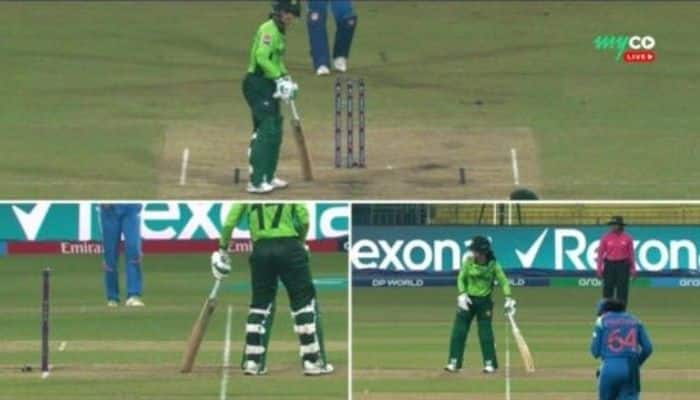In a gripping ICC Women’s World Cup 2025 encounter at the R Premadasa Stadium, Colombo, Muneeba Ali’s controversial run-out during the high-octane India vs Pakistan clash sparked debates across cricketing circles. Pakistan, chasing 248, found themselves in early trouble when Muneeba walked out to bat alongside Sadaf Shamas, replacing Omaima Sohail in the playing XI.
When will these Pakistani men grow up and stop doing this rona-dhona? To get out of the embarrassment from “one more day, one more humiliation”, they cook up some new incidents each time and try hard to deviate the attention to such petty things
When it’s so clear Muneeba Ali’s… pic.twitter.com/VhBc9FMXQN
— Silvereye (@_Break_Free___) October 5, 2025
While many expected an LBW appeal, Muneeba’s dismissal came in an entirely different, contentious fashion, leaving fans and players questioning the ruling. The drama unfolded on the final ball of the fourth over from Kranti Goud, with Pakistan at a crucial stage of their chase.
The Run-Out Incident That Divided Fans
As Muneeba advanced down the pitch, Deepti Sharma’s sharp throw hit the stumps. Though Muneeba had initially grounded her bat, it was momentarily in the air when the bails were dislodged. The third umpire Kerrin Klaaste reviewed the incident and upheld the decision – Muneeba was out. Frustrated and visibly annoyed, she walked off the field, leaving Pakistan in shock.
The Pakistan camp, led by Fatima Sana, expressed displeasure. Replays suggested Muneeba had grounded her bat and might not have intended to take a run, leading to heated discussions with the fourth umpire. Diana Baig later clarified that the issue had been resolved post-match, stating, “Muneeba’s run-out issue has already been settled… I don’t want to talk much about it now.”
Understanding the MCC Laws Behind Muneeba’s Run-Out
Cricket enthusiasts and analysts revisited MCC Law 30 to understand the ruling:
Law 30.1.1: A batter is out of her ground unless some part of her person or bat is grounded behind the popping crease.
Law 30.1.2: A batter is not considered out if she grounds her bat while running or diving, even if there’s a subsequent loss of contact before the stumps are hit.
Law 30.2: Details which batter’s ground it is when both batters are in the same crease or when no batter is in either ground.
In Muneeba’s case, her bat was momentarily off the ground when Deepti Sharma’s throw dislodged the bails, making the run-out technically correct under MCC regulations, despite the apparent confusion on-field and online.
Impact on Pakistan’s Chase
Muneeba Ali struggled at the crease, scoring just 2 runs off 12 balls, following a previous low score by Sidra Amin. Pakistan’s innings lost momentum early, putting pressure on the middle order. The psychological impact of such a controversial decision is significant in high-stakes India-Pakistan matches, where every run and wicket matters.
Expert Analysis: Why Umpiring Decisions Matter
Controversial dismissals like Muneeba’s highlight the thin line between judgment calls and strict adherence to cricket laws. Analysts noted that:
Sharp fielding and alert throws from India’s side, particularly Deepti Sharma, created high-pressure scenarios.
Umpires rely on third umpire technology to make real-time decisions, even if the outcome appears harsh.
Understanding MCC laws is critical for players and fans to interpret such incidents correctly.
While debates around fairness and interpretation will continue on social media, the match remained an intense spectacle, reflecting the growing competitiveness of the ICC Women’s World Cup 2025.

